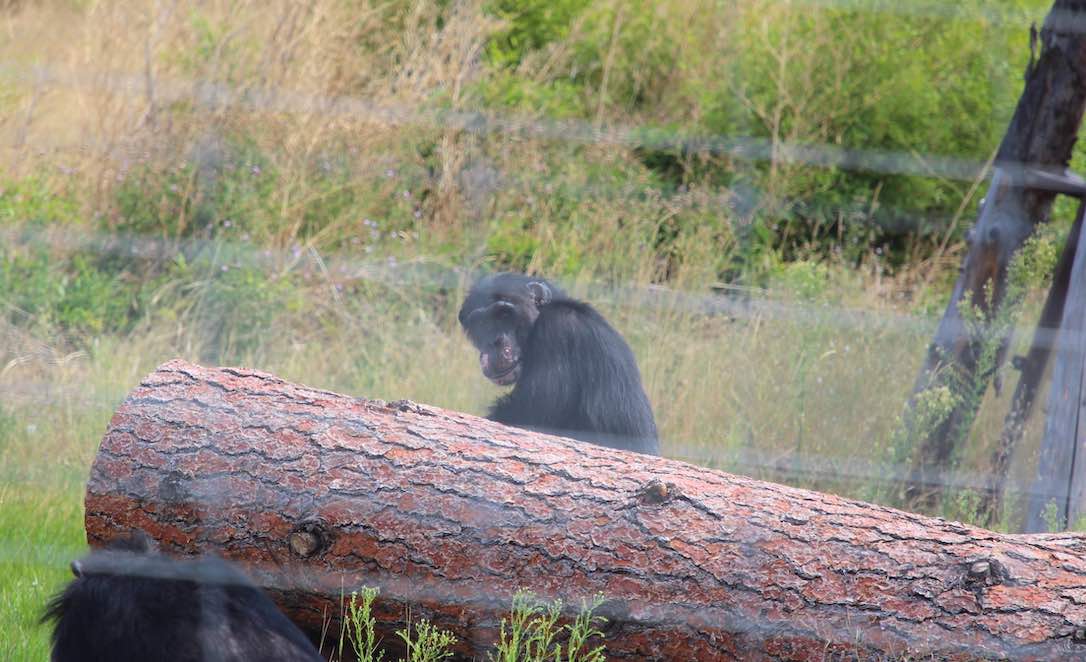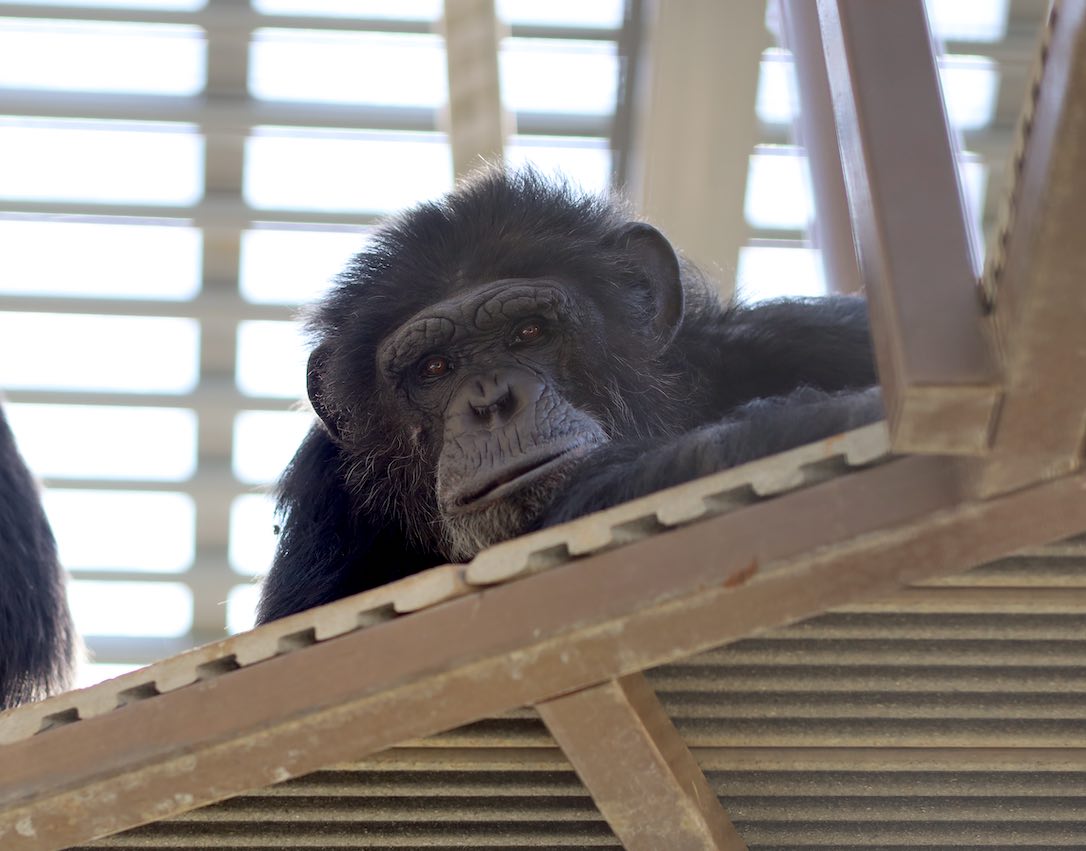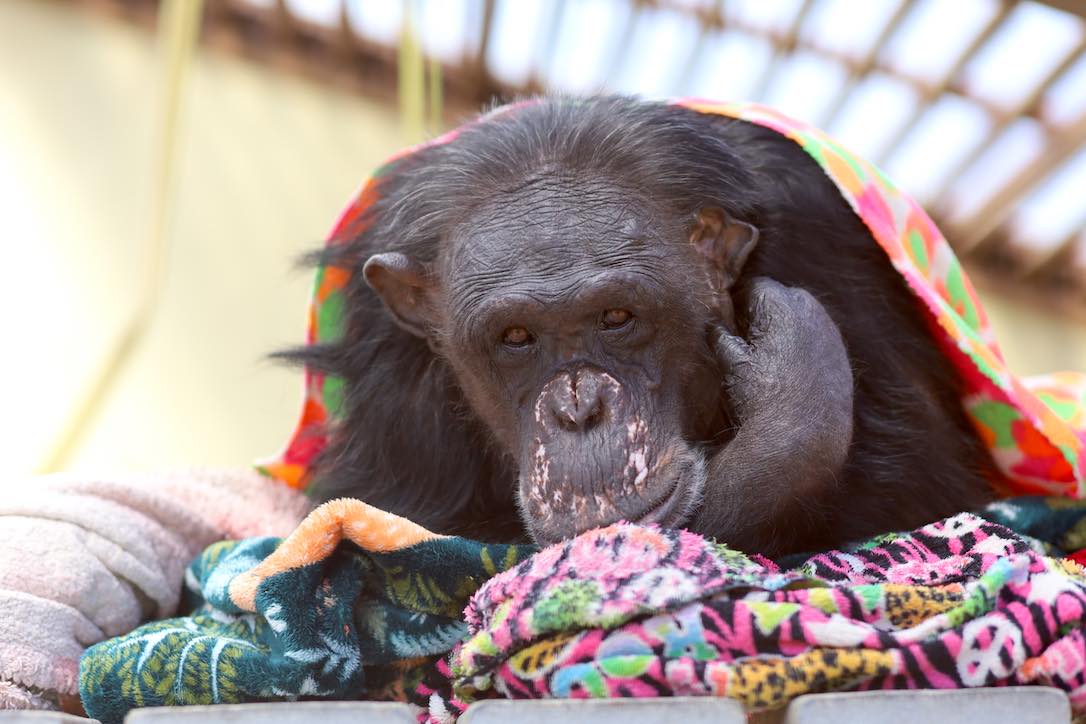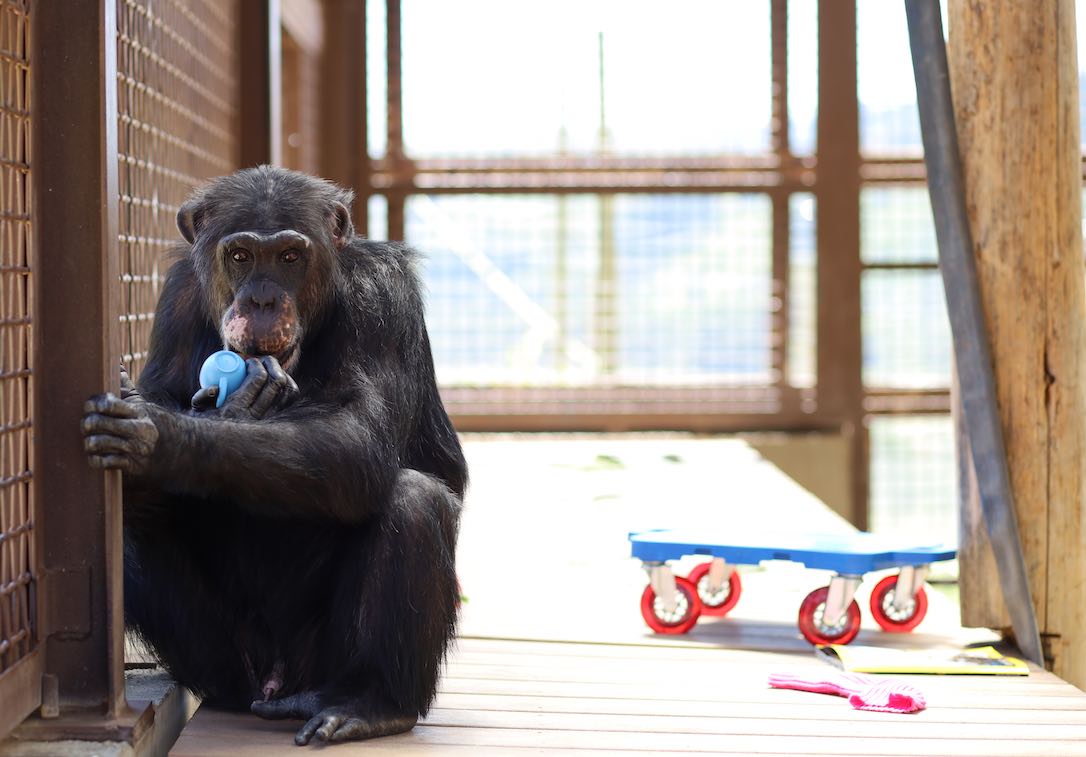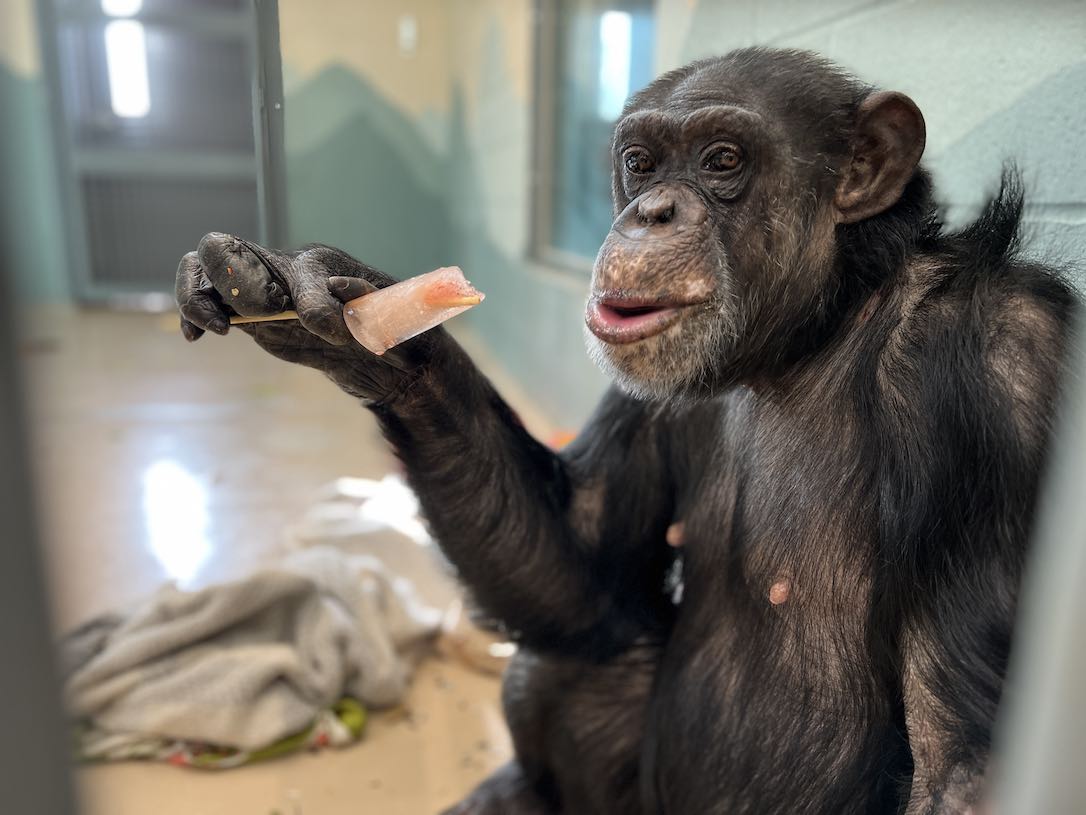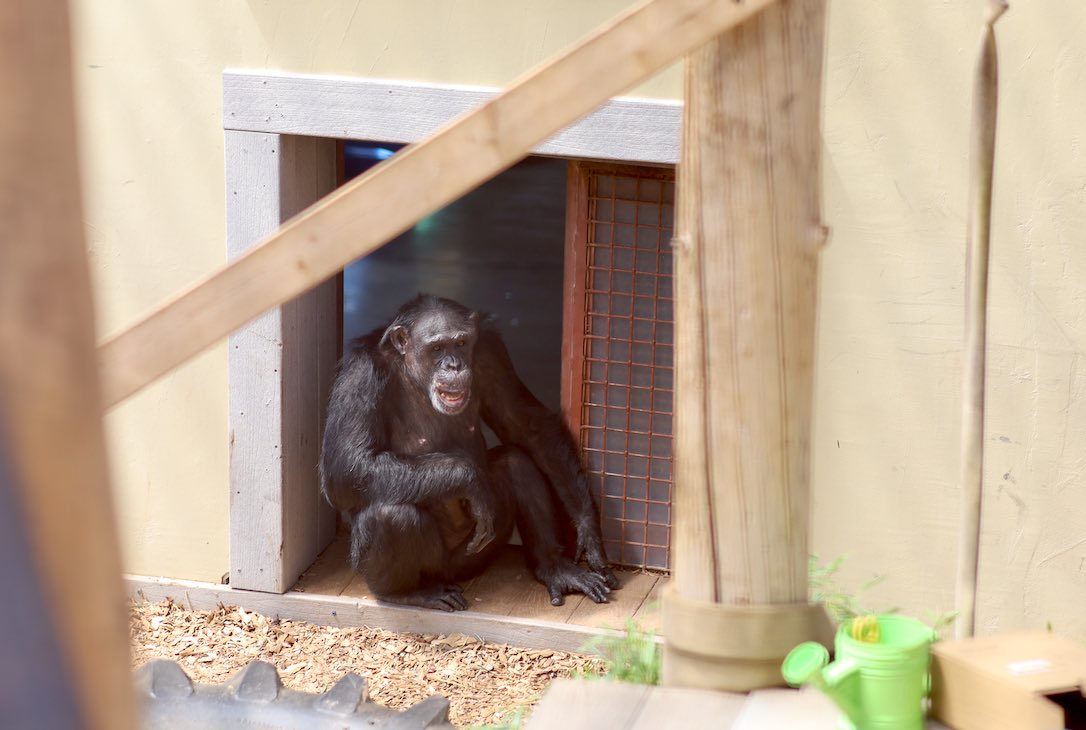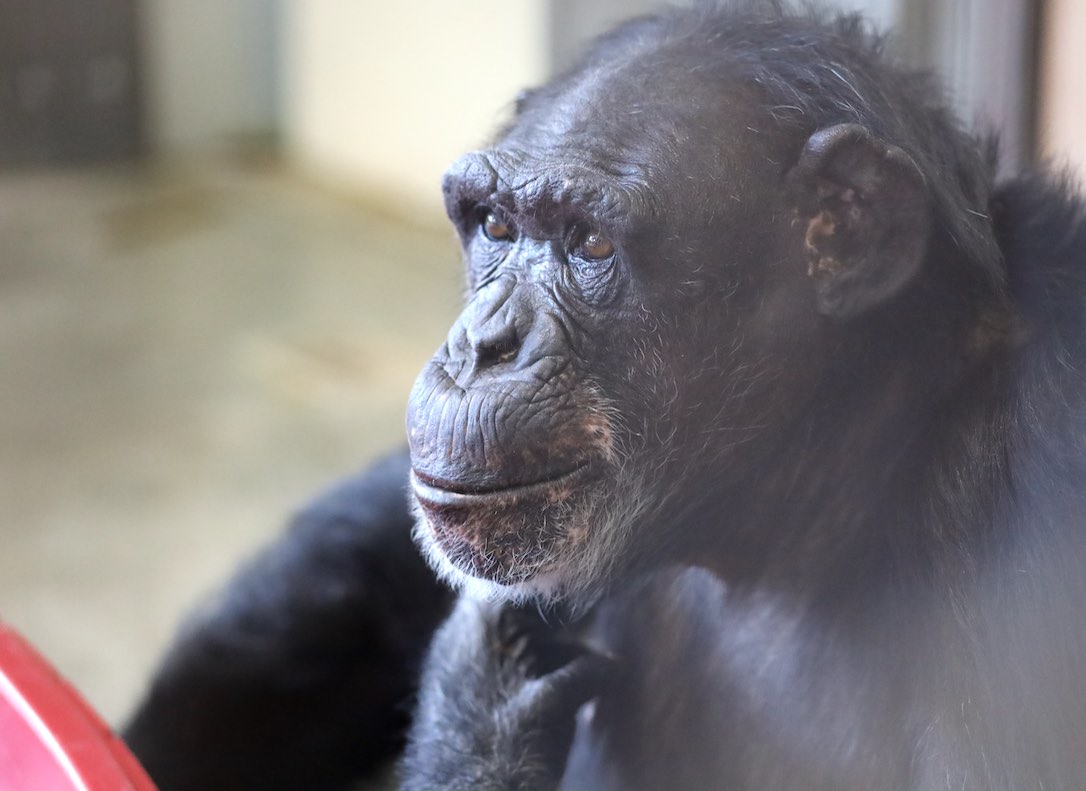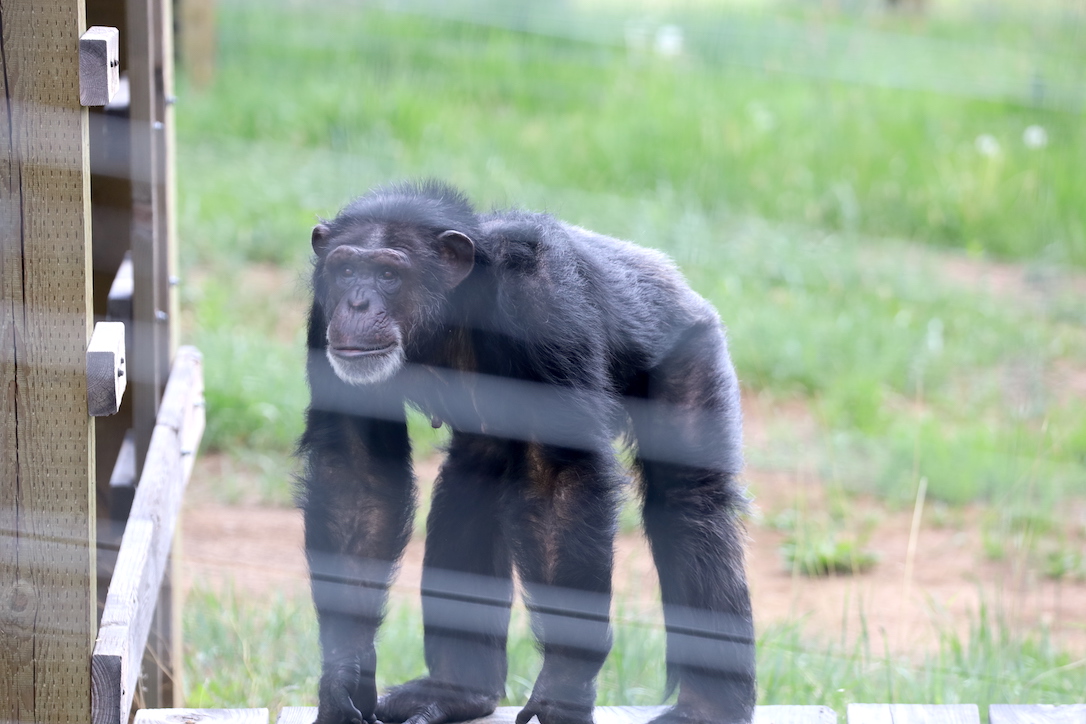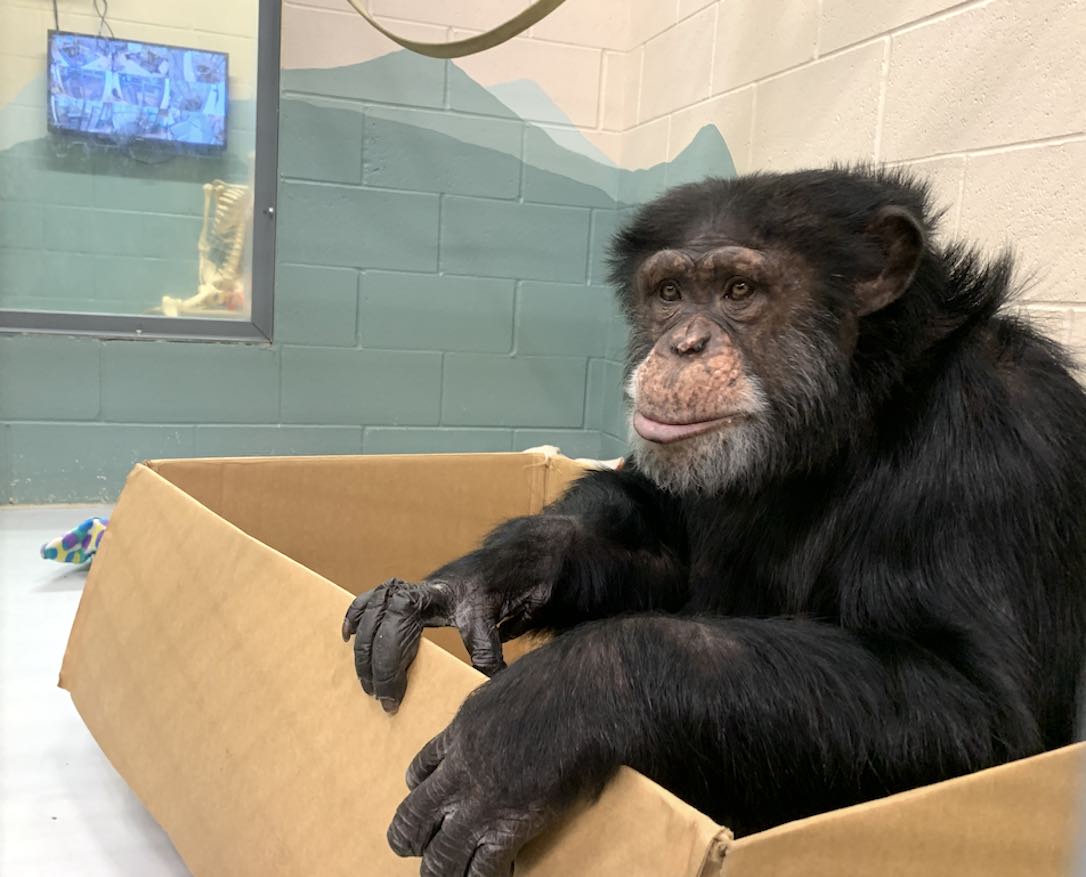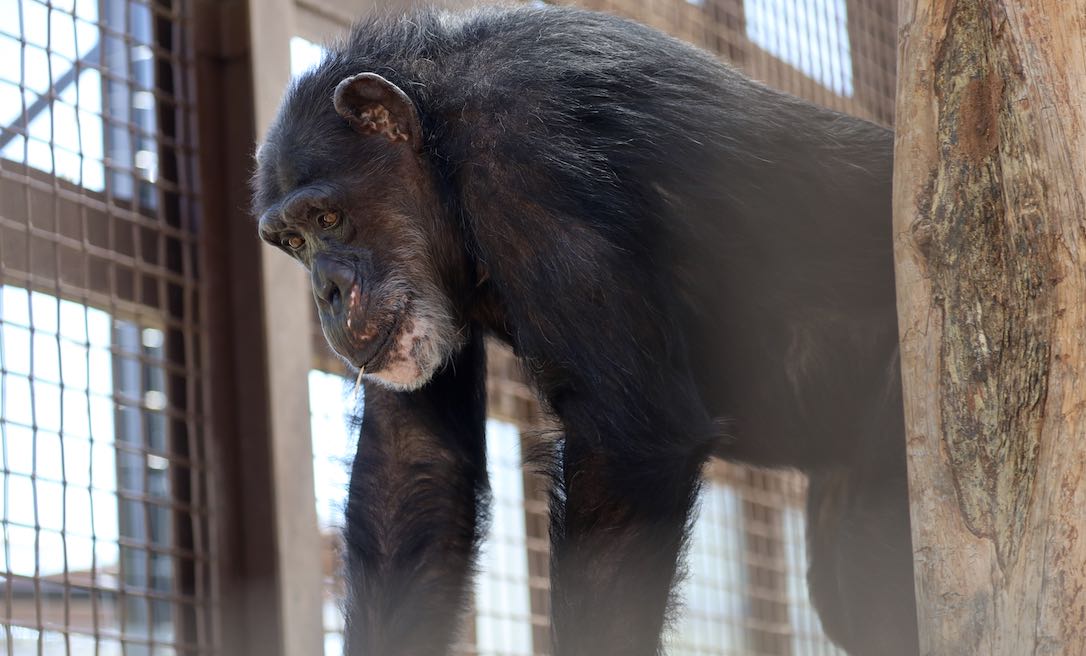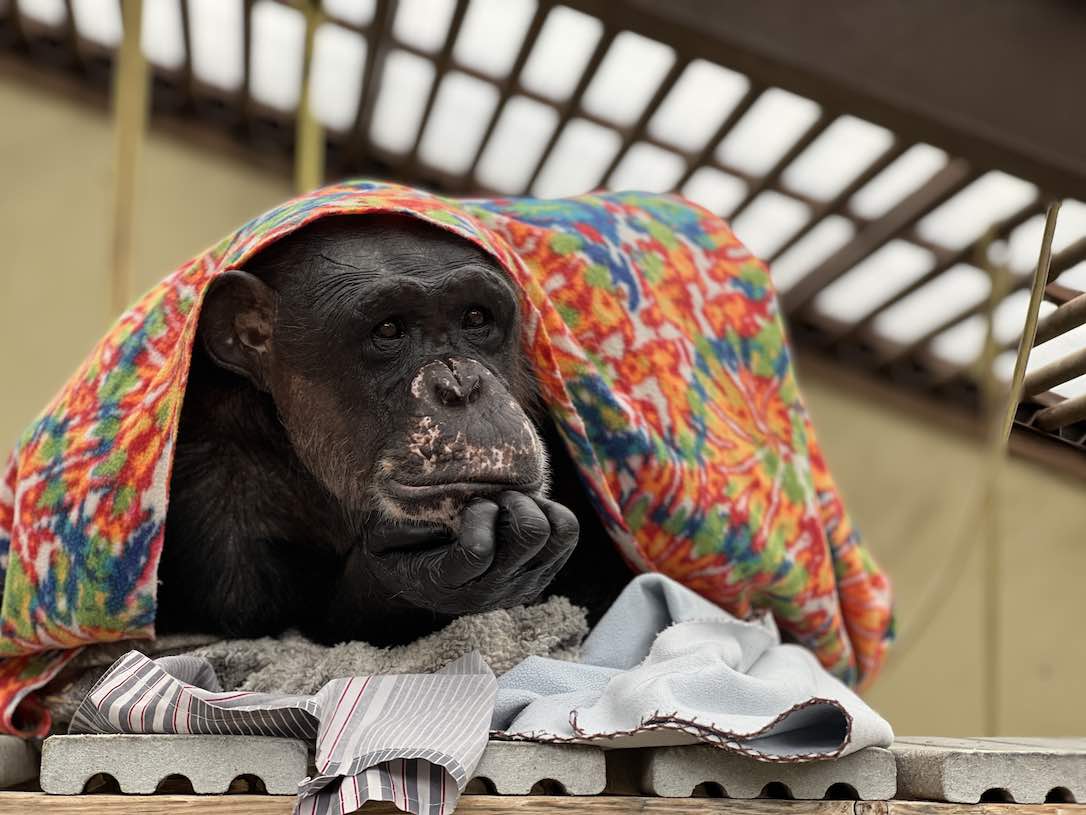Following my recent blog about Positive Reinforcement Training (PRT) with Rayne, I thought I would do another PRT blog today with a new topic… Injection training!
Injection training is extremely helpful in case of emergency or routine procedures, where the chimpanzees would undergo anesthesia. Sometimes these procedures are planned and we can work on injection training for the months/weeks leading up to the procedure, or occasionally there is an emergency and a chimp needs to have an anesthetic procedure the same day. Therefore, we try to consistently work on injection training with the chimps, as we never know when their PRT skills will have to be put to use.
For injection training, we use a blunt needle as we are just practicing. We ask the chimp to present their arm (either left or right) by using the gestural cue for “arm”, then use our clicker to reinforce them presenting their arm. We will then ask them to hold the position while we pick up the needle syringe. We then let them know what we are doing by saying “poke” and press the blunt needle to the arm. As soon as the chimp allows this, the clicker is used to let them know that is what we wanted and then we follow with a reward (in the video today, it is peanuts). Injection training can be scary and nerve-racking for some chimps, so we typically give them more of a reward than we would with an easier task.
All of Cy’s group (who previously lived at Wildlife Waystation) do so well at PRT. It is clear that their former caregivers have put a lot of time and effort into PRT, and therefore, have built a strong foundation with all of these chimps. Thank you so much to all of their previous caregivers if you’re reading this!
Dora:
Burrito:

